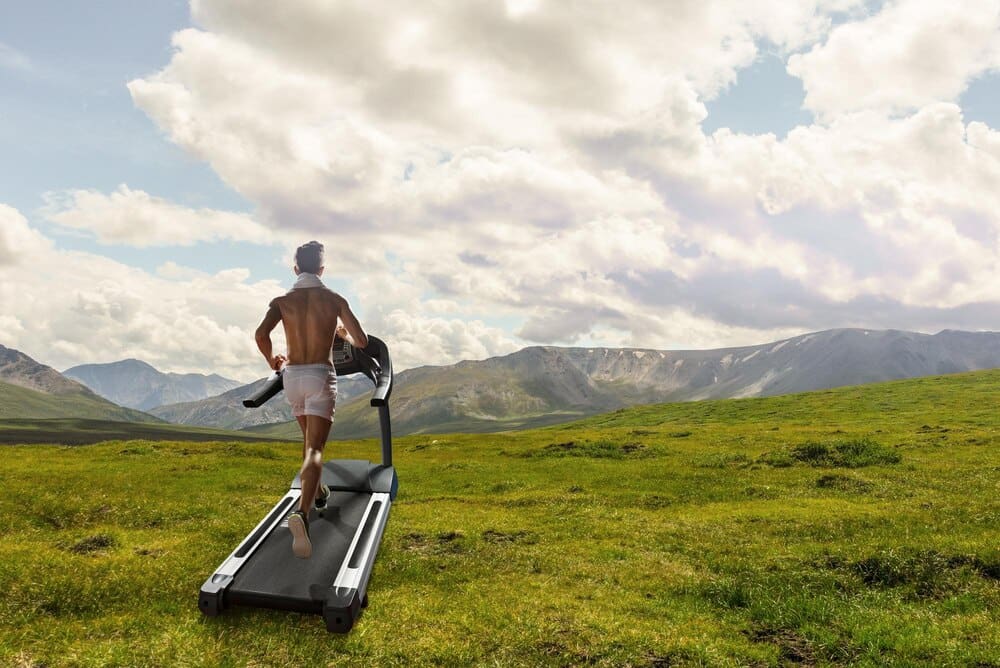For runners in South Florida, the region’s famously flat terrain presents a unique training paradox: how to prepare for the strength-sapping, speed-stealing challenge of hills without any actual hills to run. The solution for countless athletes, from weekend 5K enthusiasts to elite marathoners, lies indoors on the treadmill. By strategically manipulating the incline function, any runner can simulate grueling climbs and rolling landscapes, effectively building the leg strength, cardiovascular power, and mental fortitude needed to conquer any race course, anywhere in the world. These controlled, repeatable workouts are the key to transforming a geographical disadvantage into a powerful training advantage, proving that you don’t need mountains outside to build a mountain of fitness within.
Why Bother with Hills in Flat South Florida?
At first glance, dedicating training time to hills might seem unnecessary if your local races are all pancake-flat. However, the benefits of hill training extend far beyond preparing for a specific undulating course. Incorporating inclines is one of the most efficient ways to become a stronger, faster, and more resilient runner, regardless of the terrain you race on.
When you run uphill, you’re fighting gravity more directly. This forces your body to recruit more muscle fibers in your major running muscles, including the glutes, hamstrings, quadriceps, and calves. It’s essentially resistance training and a cardio workout rolled into one powerful session.
This increased muscular engagement builds functional strength that translates directly to improved performance on flat ground. Stronger legs generate more force with each stride, leading to a more powerful push-off and, ultimately, a faster pace. Furthermore, hill work naturally encourages better running form, promoting a quicker cadence and a forward lean from the ankles, which improves overall running economy.
Beyond muscular strength, hill workouts are a potent stimulus for your cardiovascular system. The intense effort required to run uphill drives your heart rate higher, effectively boosting your VO2 max—the maximum amount of oxygen your body can use during intense exercise. A higher VO2 max is a hallmark of elite endurance athletes and allows you to sustain harder efforts for longer periods.
The Treadmill: Your Ultimate Hill Training Tool
While nothing can perfectly replicate the feeling of an outdoor climb, the treadmill offers distinct advantages that make it an unparalleled tool for hill training, especially for those in geographically-challenged areas like South Florida. It transforms from a monotonous alternative into a precision instrument for athletic development.
The most significant benefit is control. On a treadmill, you are the architect of your workout. You can set the incline to a precise percentage, the speed to a specific pace, and the duration to the exact second. This allows you to create perfectly structured, repeatable workouts that would be impossible to find outdoors, where grade and distance are fixed.
This control leads to consistency. Every hill repeat you perform can be identical to the last, ensuring you’re applying the same training stimulus each time. This removes variables like wind resistance, changing footing, and inconsistent gradients, allowing you to accurately track your progress and focus purely on your effort and form.
Finally, the treadmill provides a safe and accessible environment. You don’t have to worry about traffic, potholes, or running in the dark to get your hill session in. Whether it’s a sweltering August afternoon or a torrential downpour, your personal hill is always available in a climate-controlled setting.
Before You Climb: Essential Tips for Treadmill Hill Training
To get the most out of your indoor climbs and minimize injury risk, it’s crucial to approach these workouts with proper technique and a clear understanding of the effort involved.
Proper Form is Paramount
Running on an incline demands slight adjustments to your form. Focus on leaning into the hill from your ankles, maintaining a straight line from your head to your feet. Avoid the common mistake of bending at the waist, which can restrict your breathing and strain your lower back.
Keep your posture tall and your chest open. Drive your knees up and use your arms purposefully, pumping them from shoulder to hip to help propel you upward. Your stride will naturally shorten, so focus on taking quicker, lighter steps rather than over-striding.
Understanding Incline and Effort
It’s vital to remember that your pace will—and should—slow down as the incline increases. Don’t try to maintain your flat-road speed on a steep hill. Instead, shift your focus from pace to effort. A good hill workout is about maintaining a consistent, hard effort level, not hitting a specific speed on the display.
For context, a 1-2% incline on a treadmill is often used to simulate the energy cost of running outdoors on a calm day. A 4-6% incline feels like a moderate, rolling hill, while anything at 8% or above constitutes a significantly steep climb that will build serious power.
Warm-Up and Cool-Down
Never jump straight into a hill workout. Begin every session with a thorough warm-up of at least 5 to 10 minutes of easy jogging at a 0-1% incline. This gradually increases your heart rate and blood flow to your muscles. Similarly, always finish with a 10-minute cool-down of easy jogging or walking to help your body begin the recovery process.
Three Essential Treadmill Hill Workouts
Here are three structured workouts you can use to build different aspects of your running fitness. Start with one hill session per week, replacing another hard-effort day in your schedule.
Workout 1: The Strength Builder (Classic Hill Repeats)
This workout is designed to build raw power, muscular endurance, and mental toughness. It involves short, intense bursts up a steep incline with full recovery in between.
- Warm-Up: 10 minutes of easy jogging.
- Main Set: Set the incline to 6-8%. Run for 90 seconds at a hard but controlled effort (you should be breathing heavily but not sprinting). After 90 seconds, hop your feet onto the side rails, lower the incline to 1%, and reduce the speed to a slow walk. Recover for 2 minutes. That’s one repetition.
- Reps: Start with 4-6 repetitions and build up to 8-10 over several weeks.
- Cool-Down: 10 minutes of easy walking or jogging.
Workout 2: The Speed Enhancer (Rolling Hills)
This session trains your body to handle changes in terrain without losing rhythm or speed, improving your lactate threshold and ability to recover on the fly.
- Warm-Up: 10 minutes of easy jogging.
- Main Set: Begin a continuous 20-minute run. Every 2 minutes, change the incline while trying to maintain a consistent, “comfortably hard” effort level.
- Example Cycle: 2 min @ 2% incline -> 2 min @ 5% -> 2 min @ 1% -> 2 min @ 6%. Repeat the cycle for the duration of the main set, adjusting your speed as needed to manage the effort.
- Progression: Increase the total duration of the main set to 25 or 30 minutes, or make the peak inclines steeper.
- Cool-Down: 10 minutes of easy walking or jogging.
Workout 3: The Race Simulator (Sustained Incline Tempo)
This workout builds endurance for sustained efforts, making it invaluable for half-marathon and marathon training. It mimics a long, grinding climb and teaches you to stay strong when you’re fatigued.
- Warm-Up: 10 minutes of easy jogging.
- Main Set: Set the incline to a steady 3-4%. Begin a 20-minute tempo run at this incline. Your effort level should be “comfortably hard”—a pace you feel you could hold for about an hour if you had to.
- Progression: Each week, aim to extend the duration of the tempo portion by 5 minutes, building up to 30-40 minutes, or slightly increase the incline to 4-5%.
- Cool-Down: 10 minutes of easy walking or jogging.
Conquer Any Course, Starting in South Florida
The flat landscape of South Florida doesn’t have to be a limitation on your running potential. By embracing the treadmill as a strategic training tool, you can systematically build the strength, power, and resilience that only hill training can provide. These controlled, focused workouts will not only make you a more formidable competitor in hilly races but will also translate into newfound speed and efficiency on the flat roads back home. The hills you conquer indoors today will build the strength you need to overcome any challenge on the course tomorrow.







